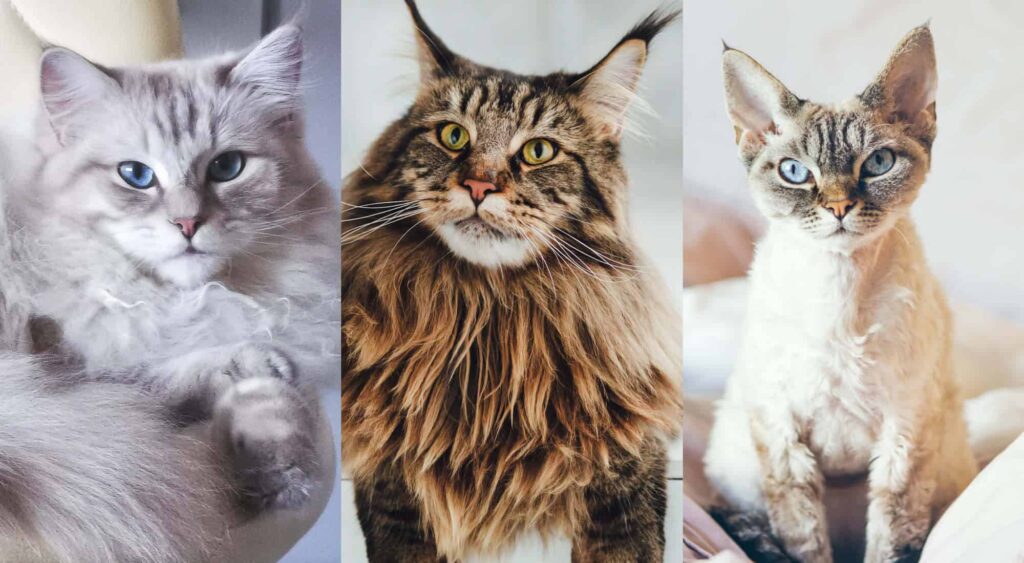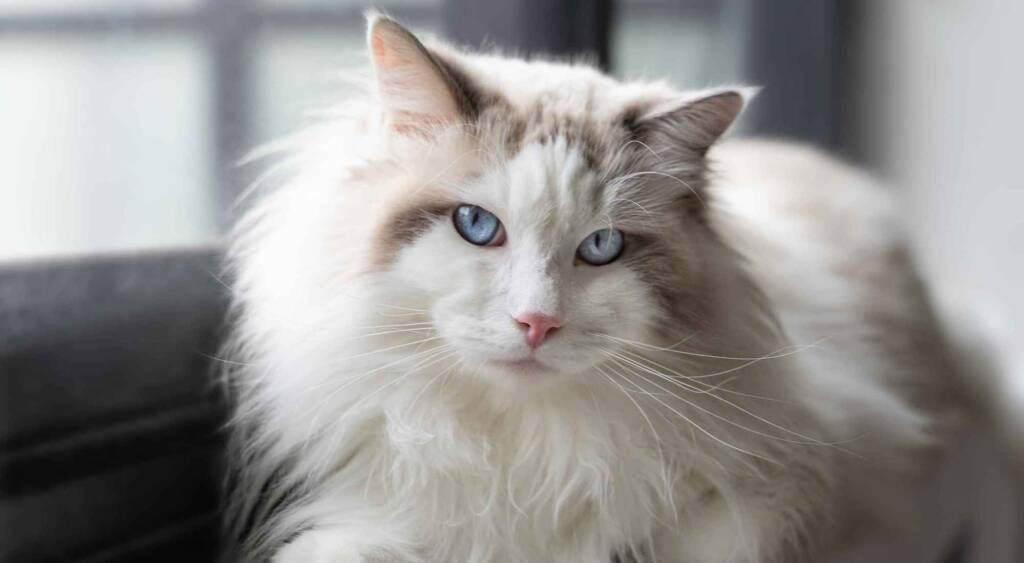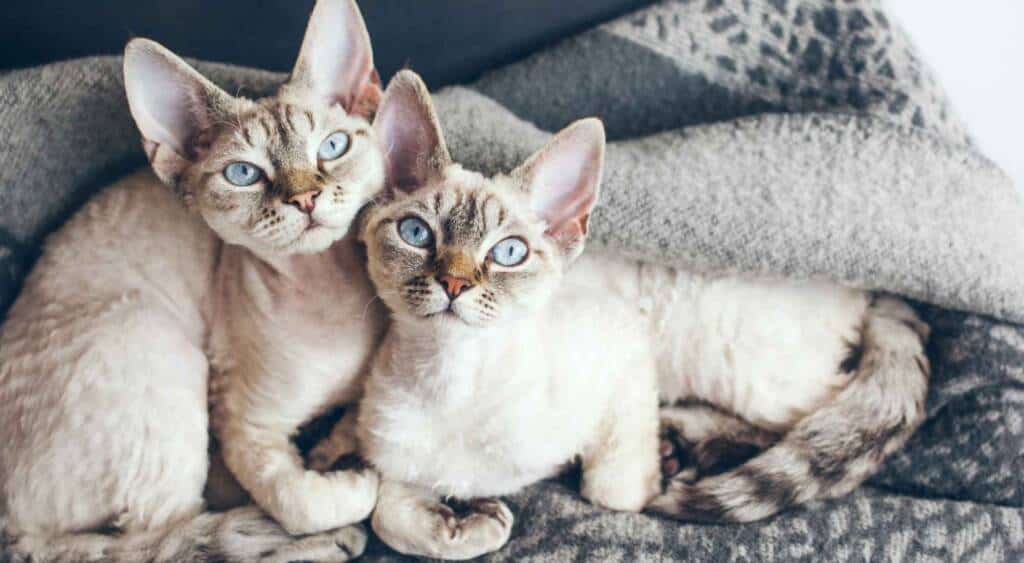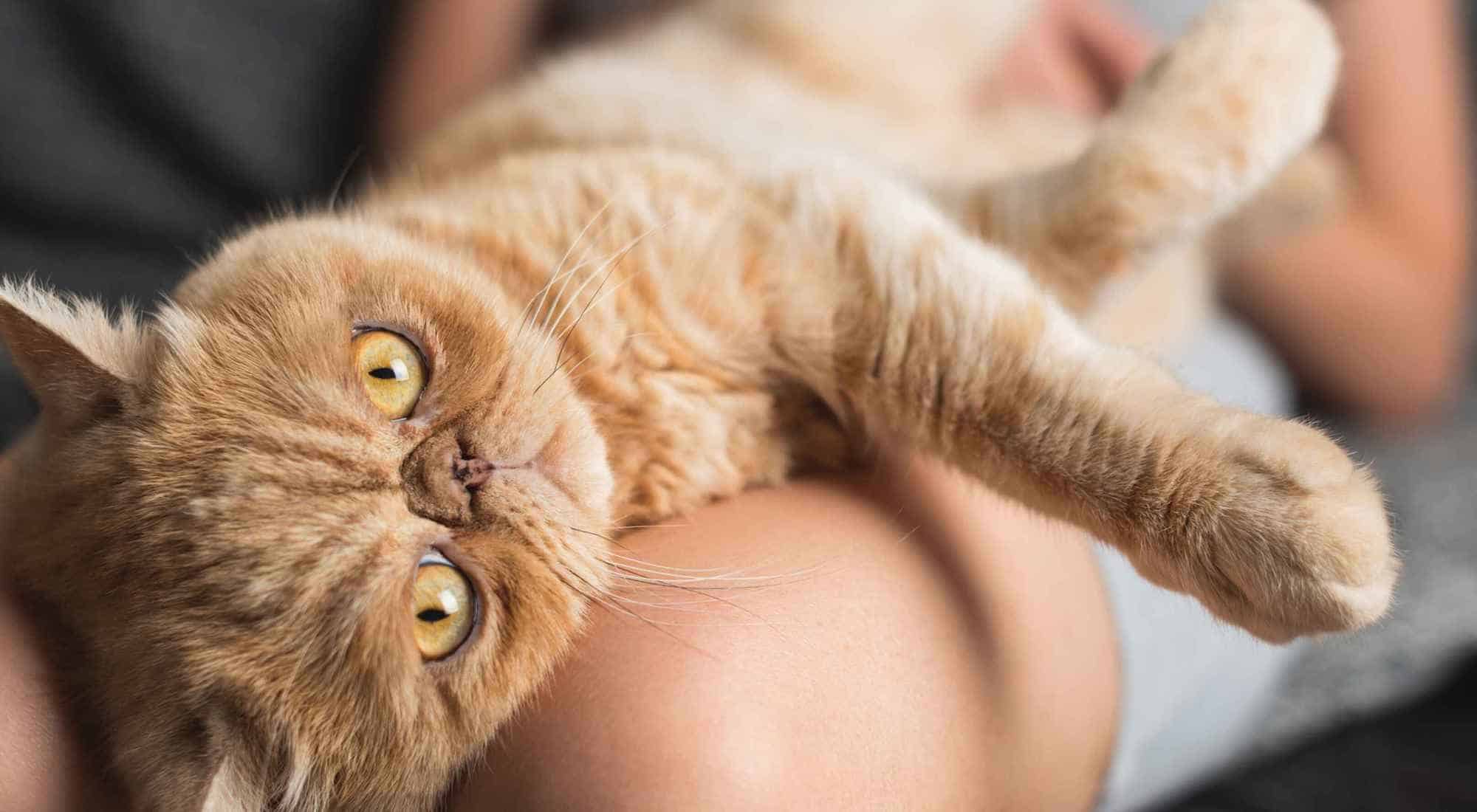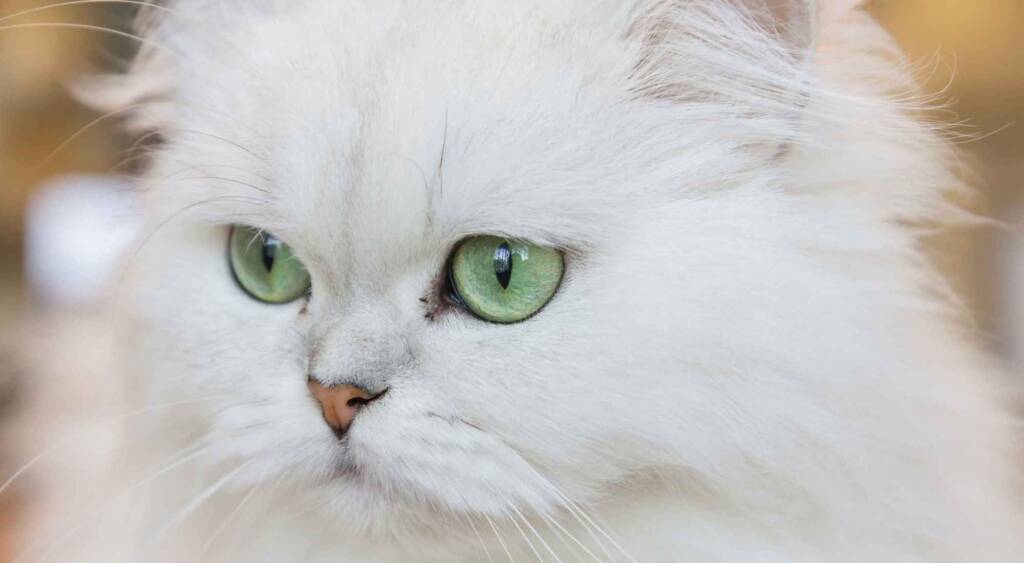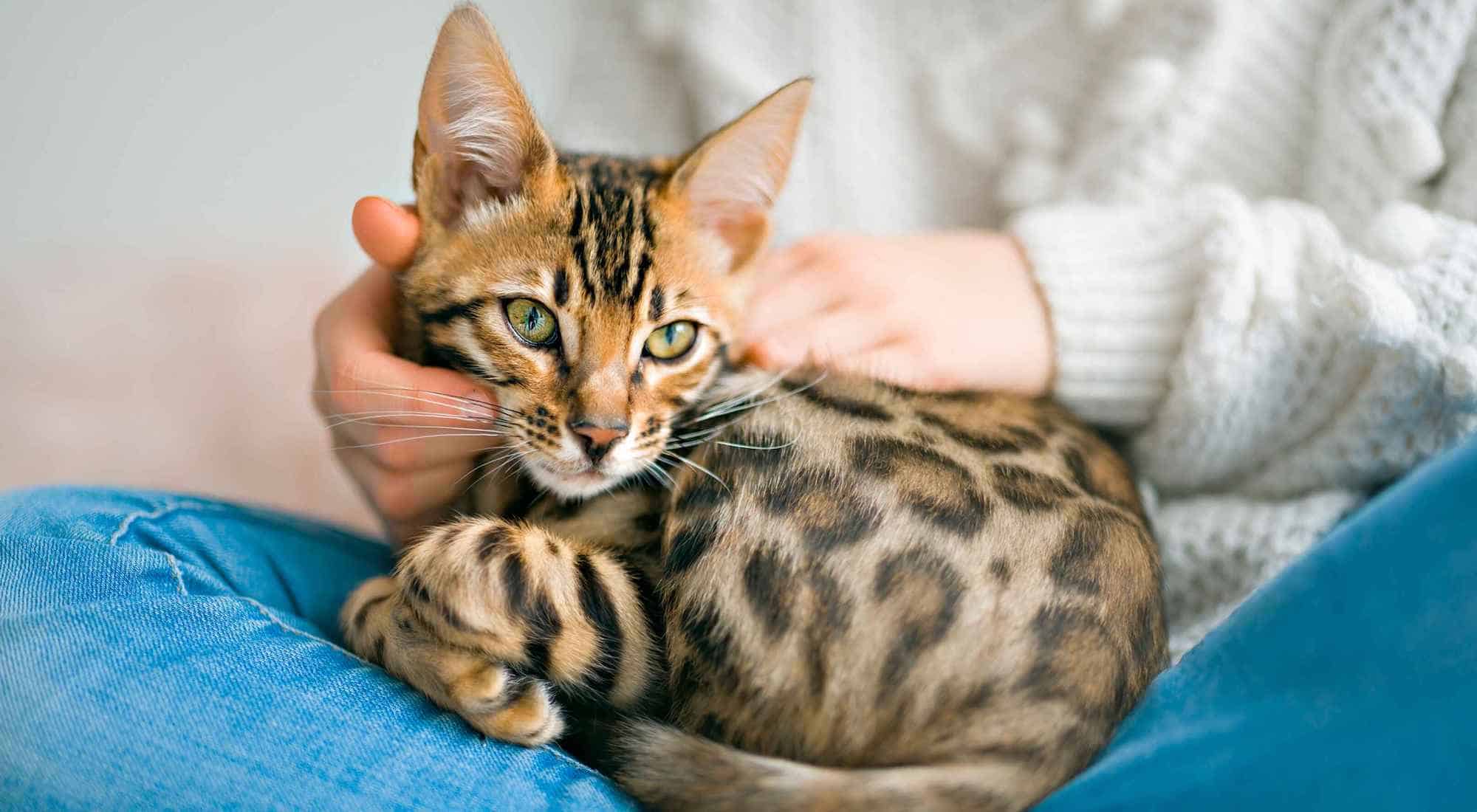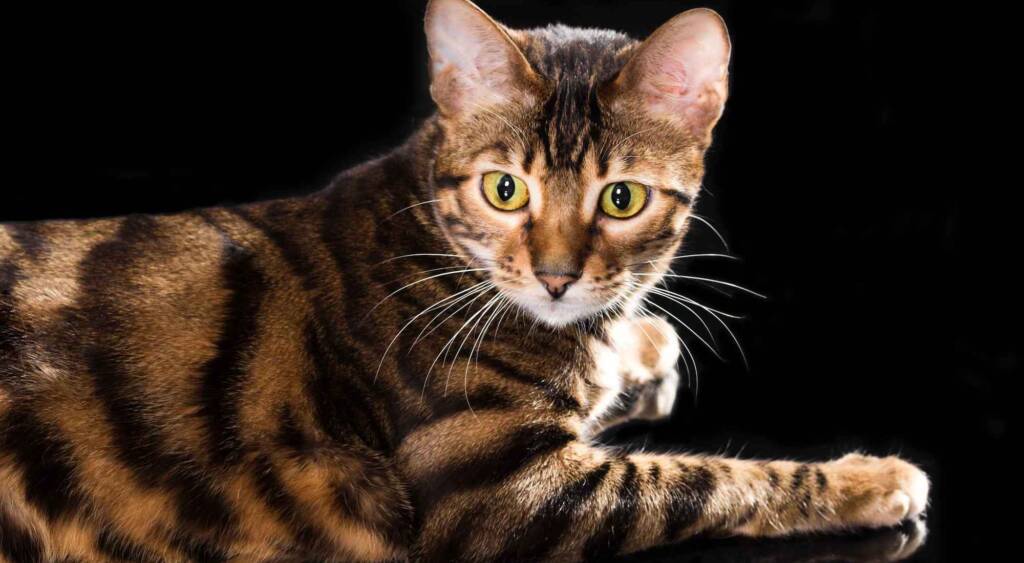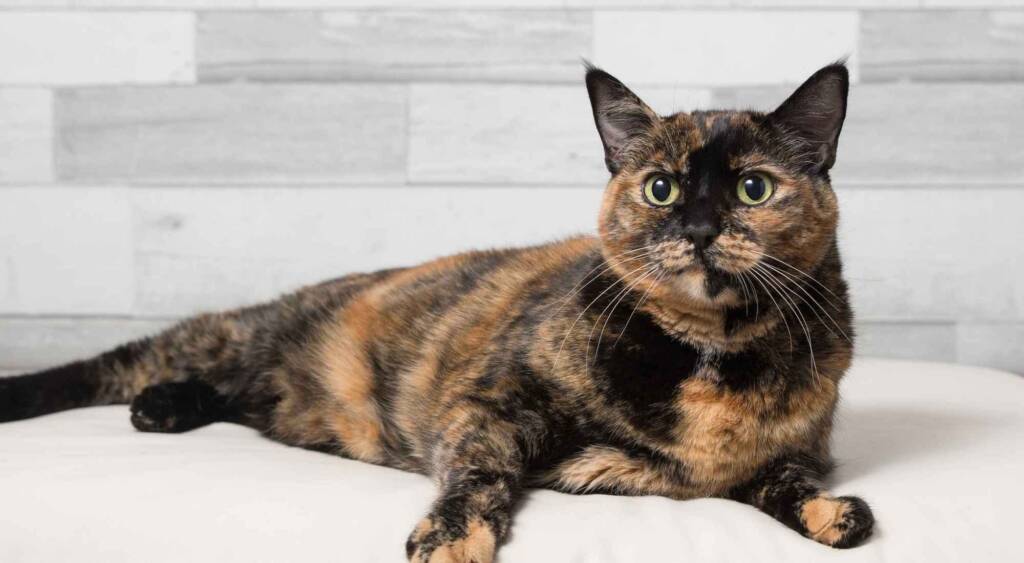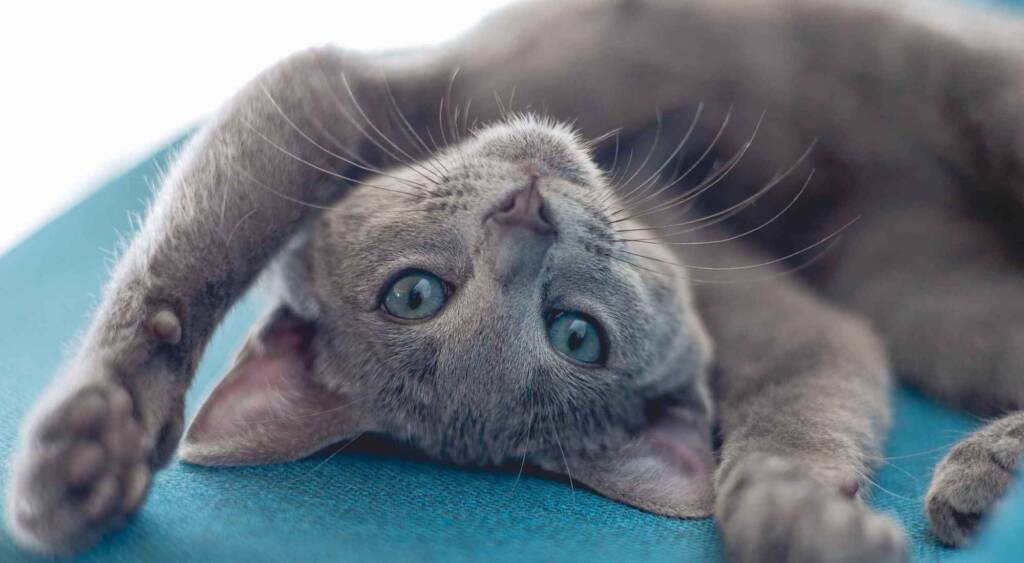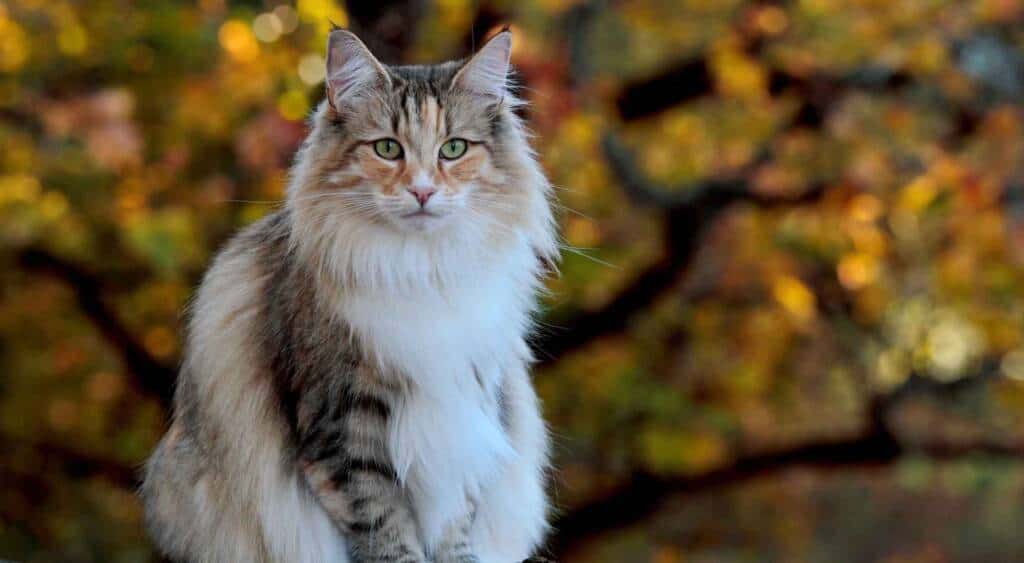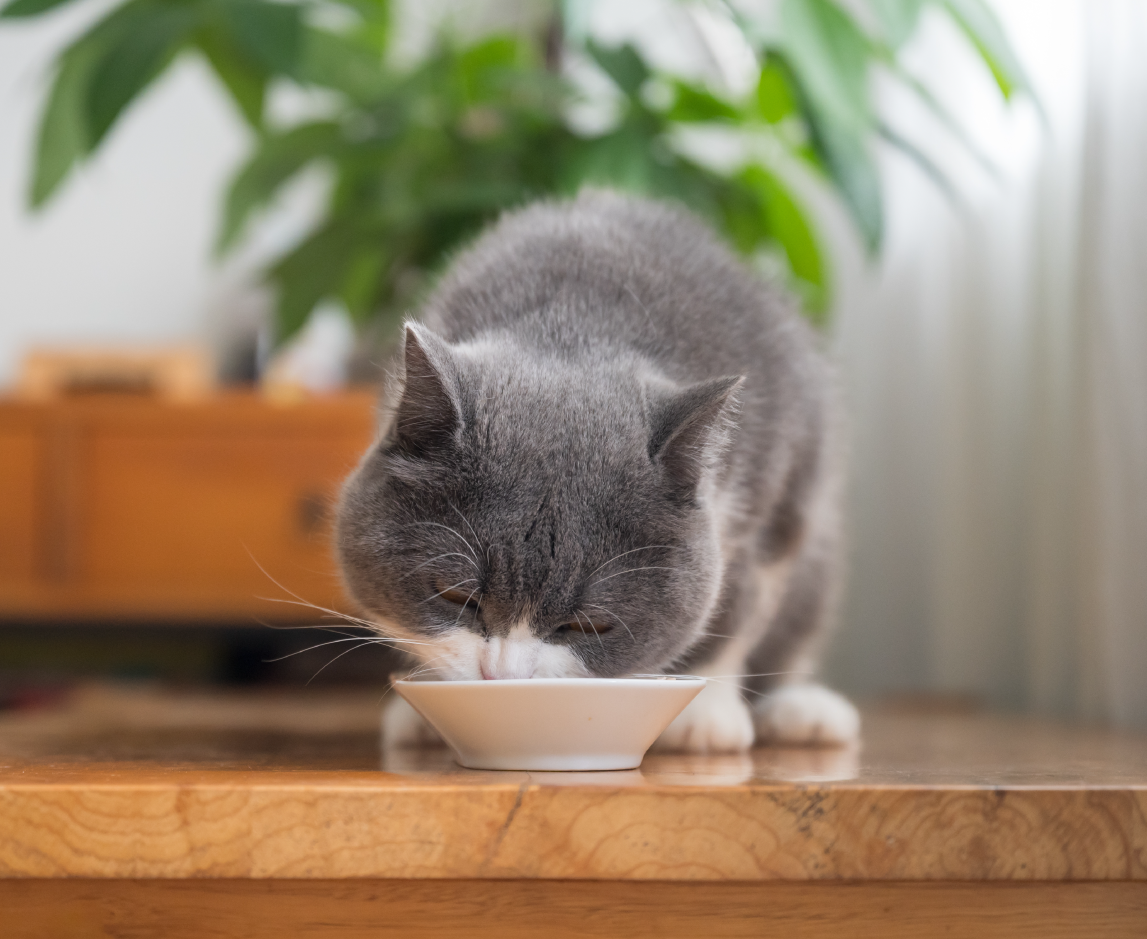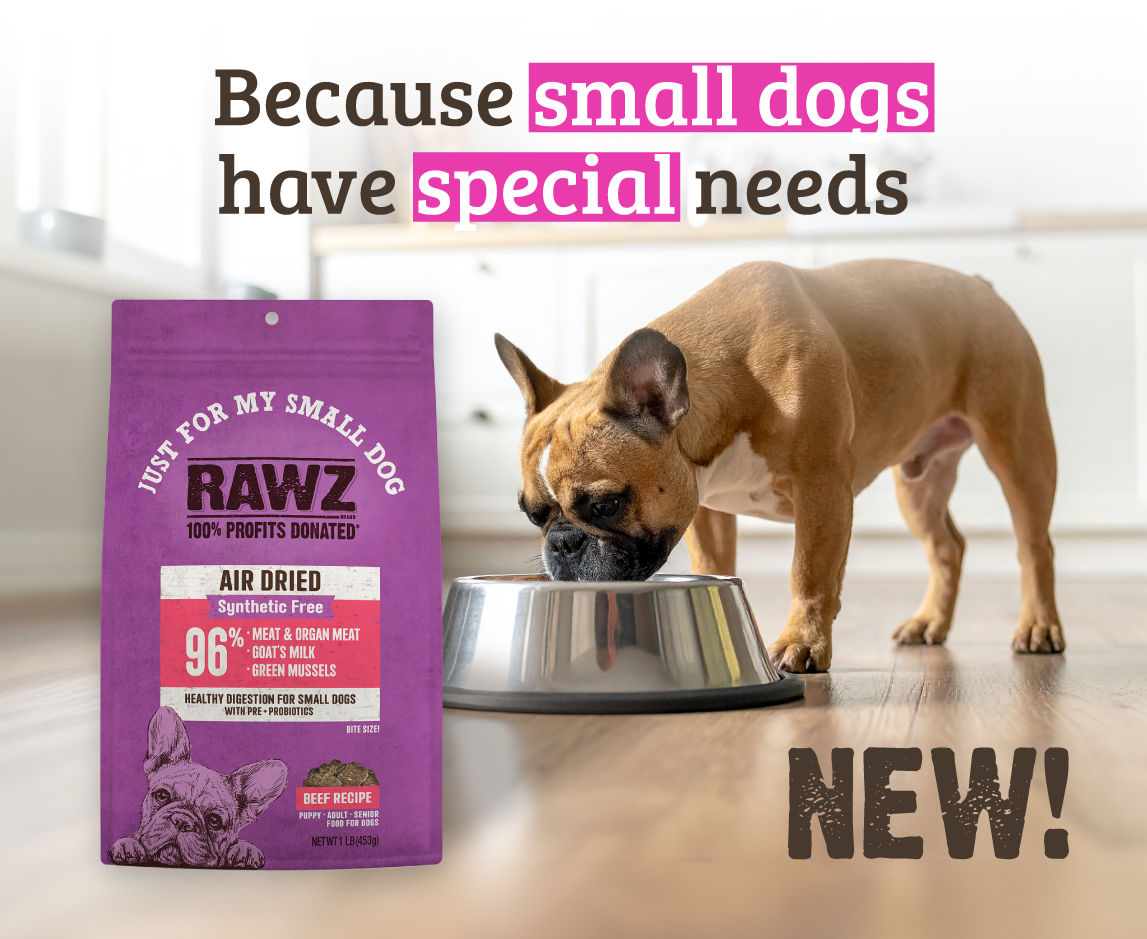Whether you’re looking to add a new feline family member or are curious about the different cats you may see around, this post will examine some of the most popular and historic breeds of cats.
Our list doesn’t include mixed breed cats, which would by far take the top spot. After all, the most popular breed of cat is the one laying in your lap! Without further ado, let’s take a look.
1. Ragdoll
With its blue eyes and long luxurious coat, the Ragdoll has been incredibly popular for decades. Standing just under a foot tall and weighing in between 10 and 20 lbs, these sweet, easy going felines have earned a reputation for being affectionate. Born white in color, Ragdolls can display a variety of patterns and colors in adulthood. And although these stunning cats do not have breed-specific nutritional needs, the focus should be on high quality and protein to optimize their 12- to 15-year average lifespan. They are not considered hypoallergenic.
2. Maine Coon Cat
These gentle giants can reach upwards of 25 lbs during their 10-to-13-year lifespan. Although most cats dislike water, Maine Coons have an innate curiosity toward it. Mostly due to their larger build, Maine Coons can be prone to Cardiomyopathy — a heart muscle disease — and hip dysplasia. For a more in depth look at this wonderful, diverse breed (with up to 75 different color combinations), read our featured post here!
3. Devon Rex
The Devon Rex is a high-energy, playful, intelligent cat that needs plenty of play and exercise and is also well-known for its striking facial features. This long (around 18 inches), slender feline typically weighs 6 to 9 lbs. Originating in the English countryside in 1960, the Devon Rex has become a quite popular pet, living nine to 15 years. These hypoallergenic pets have a wide variance in colors and patterns, from solid to calico.
4. Exotic Shorthair
Since the 1950s, this cross between the American Shorthair and the Persian has been endearing themselves to their humans with gentle and affectionate personalities. These felines, sometimes known as Shorthaired Persians, typically live for 12 to 16 years, giving them the opportunity to truly solidify their place in the family. Although coat colors vary greatly, it is common to see pad coloring that matches a thick, plush coat. Being so dense, the coat can adversely affect allergy sufferers.
5. Persian
The Persian may be one of the most recognizable cat breeds based on appearance alone. Taking their name from their country of origin, Iran, formerly Persia, this breed is commonly seen on the big screen, occupying numerous spots on Entertainment Weekly’s list of iconic cats in cinema. The breed is medium to large in size, weighing between seven and 12 lbs and reaching up to 18 inches long. As one would guess from its regal appearance, the Persian requires consistent grooming. With their long and luxurious coats, Persians are not hypoallergenic (though males produce more of the protein that triggers allergy symptoms) but consistent grooming can limit reactions.
6. Bengal
Similar in appearance to a miniature leopard, the Bengal was bred to blend the beautiful wild appearance of an actual leopard with the domesticated demeanor of a house cat. Their sleek, soft coats and almond-shaped eyes give them a distinctive look. Since they are long and muscular, Bengals can appear to be larger than their actual weight. They are actually a medium-sized breed, with females weighing as little as 6 lbs and males weighing in closer to 15 lbs. Since Bengals have high energy levels, they are often able to burn off excess calories to maintain a healthy weight.
7. Toyger
The word “Toyger” is a combination of the words “toy” and “tiger,” which accurately describes the goal of developing the breed. In the 1980s, a striped domestic shorthair was crossed with a Bengal, and the Toyger was born. They are extremely rare, with breeders often charging between $1,500 and $5,000 per kitten. A Toyger’s coat is short, but dense, often in shades of brown or deep orange, with dark tabby stripes all over the body and circular markings on the head. To maintain the shine of their thick, silky coats, these cats need to be brushed weekly. Toyger cats also have high energy levels like their Bengal relatives, so they usually don’t have trouble maintaining a healthy weight.
8. Tortoiseshell
Tortoiseshell cats are known for their beautiful multi-colored coats that resemble the shell of a tortoise. Their history dates all the way back to ancient times, and though not technically a breed, the name is used to describe their coat color and pattern. If you come across a tortie, they’re likely to be one of these popular breeds:
American Shorthair, British Shorthair, Persian, Cornish Rex or Maine Coon.
9. Russian Blue
As their name implies, Russian Blue cats hail from Russia with blue-colored coats, and are an older, naturally occurring breed. They have a signature upturn in the corners of their mouths, giving them a permanent Mona Lisa-like smile. They’re also known for their graceful, firm demeanor, muscular bodies and long, fine-boned legs. Their short, double-layer coat is a clear sign that the breed is native to a cold climate. If well cared for and kept indoors, Russian Blue cats can live to be 15 to 20 years old or even more.
10. Norwegian Forest Cat
These playful and affectionate family pets are thought to have been brought to Norway centuries or even millennia ago. They are considered a natural breed, having developed without intentional breeding. Norwegian Forest Cats can weigh up to 22 lbs — larger than most cat breeds and even some smaller dogs. Life expectancy, like many domesticated felines, is anywhere from 12 to 20 years depending on overall care and quality of life. These generally healthy cats are susceptible to weight-related issues, such as diabetes and joint strain with age.
Feed Your Cat Only The Best
No matter what breed of cat you have, whether it’s on our top 10 list or not, feeding a nutritionally complete and balanced diet formulated for these true obligate carnivores is always the best choice! Visit us online to find an authorized RAWZ retail partner near you.


